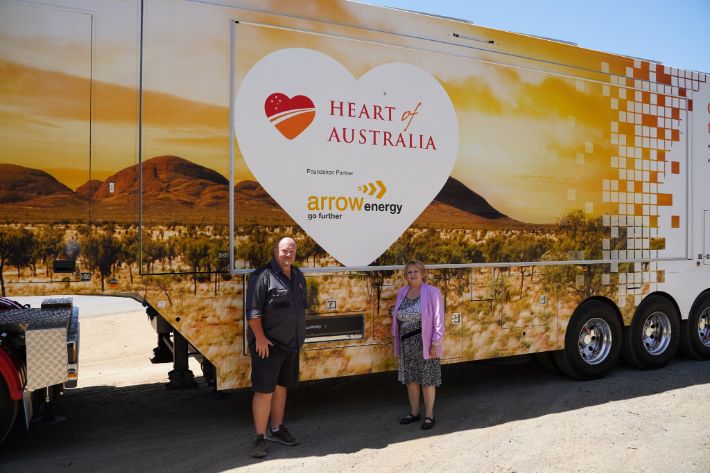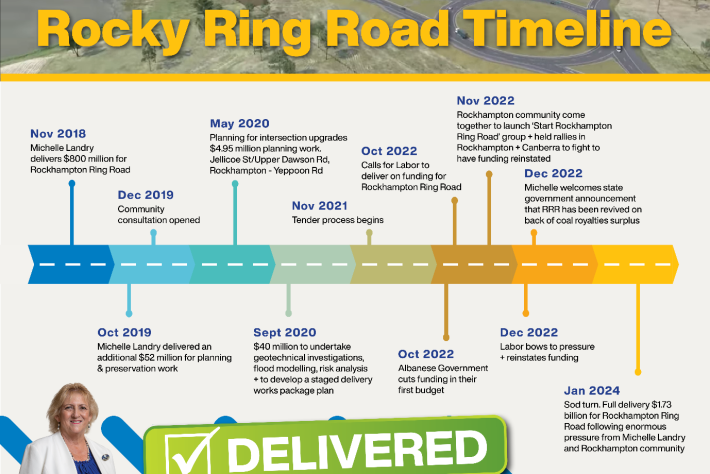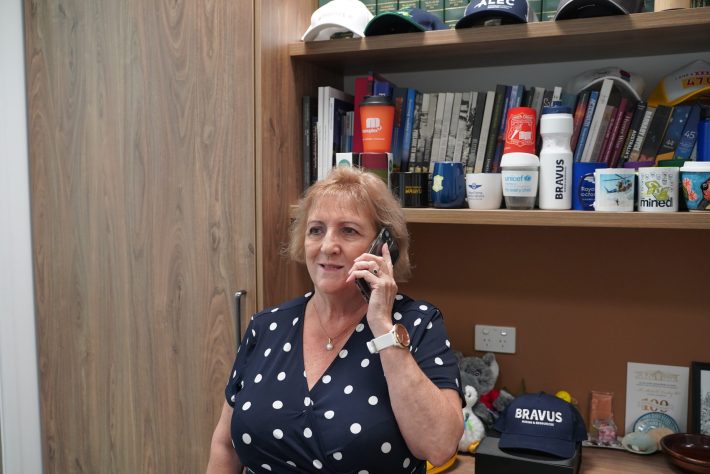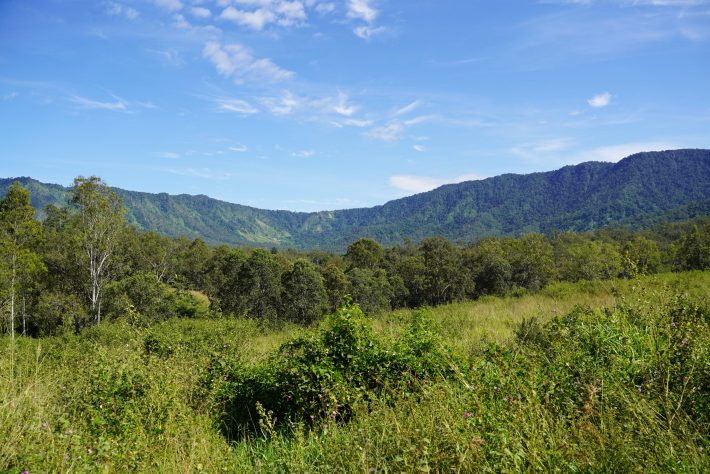The Morrison Joyce Government is investing $296.5 million in regional, rural and remote health in the 2022–23 Budget, to improve access to healthcare for people in country Australia, including those in Capricornia.
The Budget measures announced this week build on earlier initiatives, including the ten-year Stronger Rural Health Strategy (SRRS), to address the challenges of access to health care for regional, rural and remote patients.
Federal Member for Capricornia Michelle Landry said the strategy had already delivered significant achievements for regional Australia.
Liberal and Nationals Government investments under the SRHS between 2016 and 2021 have:
- Increased the number of full-time equivalent (FTE) GPs in regional, rural and remote areas of Australia by more than 1,300;
- Increased the number of FTE nurses in these areas by more than 1,200; and
- The number of FTE allied health professionals, like physiotherapists, dieticians and speech pathologists, increased by more than 2,500.
Minister for Regional Health, Dr David Gillespie, a former regional doctor for more than 30 years, said the health and wellbeing of people living in regional, rural, and remote Australia will always be priority for the Morrison Joyce Government.
“A third of Australians live outside the cities, and this Government is working to ensure they all have access to quality, affordable health care,” Dr Gillespie said.
“We are also absolutely invested in strengthening and supporting the health care workforce in rural communities, through rural medical training and other strategies to attract and retain health professionals.”
Ms Landry said the key areas of regional, rural and remote health investment in the 2022-23 Budget will strengthen the workforce, improve access to diagnostic MRI imaging, mental health support and increase rural training opportunities for more doctors, nurses and allied health professionals.
“The best way to get more doctors and health professionals in the regions is to give them access to train in the regions, which means they are much more likely to stay once qualified,” Dr Gillespie said.
In addition to the many regional programs currently being supported, the Morrison Joyce Government will increase opportunities for rural health and medical training, to strengthen the regional and rural health care workforce and encourage more health professionals to practice in the bush, including:
- $99.3 million towards rural medical education and training, including 80 additional Commonwealth supported places, to give more students, especially those in regional and rural Australia, the opportunity for medical school education and training;
- $2.1 million will continue the National Rural Health Students Network of Rural Health Clubs in universities with a Rural Health Multidisciplinary Training program, to support students while they study.
The Morrison Joyce Government is making MRI scans more affordable and more accessible closer to home by investing $66 million over four years to deregulate and expand Medicare-funded MRI scans in regional, rural and remote areas.
MRI services are critical for diagnosing soft-tissue illnesses and diseases, including cancer. This change begin on Tuesday, 1 November this year and will benefit Modified Monash Model 2–7 areas.
Ms Landry said improving access to critical diagnostic imaging services for more regional and rural Australians was a significant step towards addressing the health care disparity with the cities.
“This change means rural and remote patients will benefit from reduced out-of-pocket costs for MRI scans, accessing world-class services closer to home,” Ms Landry said.
“Improving access to MRI through this deregulation measure will reduce pressure on out-of-pocket costs for patients in Capricornia, and the need to travel to access these services.”
To ensure critical emergency services in rural and remote Australia, the Morrison Joyce Government is investing $55.5 million in aeromedical services, including
- $33.3 million over four years for the Royal Flying Doctor Service, in addition to their current funding of $84 million per year, to establish a new 10 Year Strategic Agreement and address cost pressures which totals close to $1 billion over the 10 year timeframe;
- $4.1 million for Little Wings to provide aeromedical support for seriously ill children across Queensland.
Ms Landry said these investments in aeromedical services reflected the right of all Australians to access emergency care.
“Just as people in our cities can expect an ambulance for a medical emergency, Australians in rural and very remote areas need to have confidence in aeromedical services, and that’s what we’re providing,” Ms Landry said.
Dr Gillespie said the Morrison Joyce Government is investing $17.2 million in Heart of Australia, to provide five mobile clinics, travelling across 34 communities in rural Queensland.
“These mobile clinics deliver important diagnostic, treatment and follow-up care in areas such as cardiology, psychiatry, and gynaecology, and will soon have CT and x-ray services,” Dr Gillespie said.
Ms Landry said they had campaigned to receive funding for Heart of Australia to enable the service to continue to provide essential health care to patients in Middlemount, Sarina and Moranbah.
The Morrison Joyce Government is investing $1.2 million to appoint a Senior Midwifery Advisor to improve the quality of policies and programs implemented as part of Woman-Centred Care: Strategic Directions for Australian Maternity Services.
“The person appointed to this important new role will work closely with the Chief Nursing and Midwifery Officer and the Rural Health Commissioner, as part of the Morrison Joyce Government’s commitment to improving access to maternity services in rural and remote communities,” Dr Gillespie said.
The Morrison Joyce Government is also providing $4.2 million to support headspace centres in regional, rural and remote areas to attract and employ GPs, enabling headspace services to deliver the complete model of enhanced primary care.
In addition to the $296.5 million investment, the Morrison Joyce Government is also investing in the mental wellbeing of people in the bush, by delivering mental health, wellbeing and suicide prevention services in regional, rural and remote communities, including:
- $42.7 million to establish specialised regional initiatives for suicide prevention through primary health networks, strengthening the capacity for communities to implement system-wide responses to reduce risk of suicide in their region;
- $8.6 million to establish the National Closing the Gap Social and Emotional Wellbeing (Mental Health) Policy Partnership to maintain momentum in reducing the devastating and disproportionate impact of mental ill-health and suicide on Aboriginal and Torres Strait Islander people;
- $14.3 million for programs delivered by headspace to provide services to support young Australians in need, which builds on the current network of 78 headspaces in regional, rural and remote areas; and
- $1.8 million towards the Raising Children Network, to maintain the Raising Healthy Minds app, improving the mental health literacy of Australian parents and carers to identify the signs of social or emotional problems in their child.
Ms Landry said the Morrison Joyce Government’s investments recognised the need for Australians in regional, rural and remote areas to have improved access to mental health and suicide prevention services.
“Australians in the bush experience most of the same life pressures as those in the cities – and some different ones, such as being more vulnerable to natural disasters – but they don’t always have the same support,” Ms Landry said.
“The past few years have been tough on everyone, and our government is making further investments to ensure mental health services are available to country communities, where and when people need them.”
In addition, the 2022-23 Budget is investing in the following initiatives:
- $14.3 million over four years will fund additional University Departments of Rural Health activities linked with Aged Care facilities, presenting opportunities for these regions to have better access to services for senior Australians, and better training opportunities for health students in regional and rural Australia; and
- $13.9 million over two years from 2022–23 to deliver 150 additional scholarships each year under the Puggy Hunter Memorial Scholarships Scheme. The scholarships will support Aboriginal and Torres Strait Islander students to gain care and support qualifications and entering the health workforce.
The new workforce measures announced in this week’s Budget build on the $123 million Health Workforce Reform package, announced in the 2021-22 Budget in support of the Stronger Rural Health Strategy and other recent initiatives and programs that are solely designed to improve rural health.
“The Morrison Joyce Government is providing $708 million to continue the Specialist Training Program to help get more doctors trained in the specialties country Australia needs,” Ms Landry said.
More than $1.4 billion has been invested in this important program since 2010, which supports training positions outside of traditional metropolitan teaching hospitals. This includes regional, rural and remote areas, and private facilities.
“The extension of the program will mean 920 full-time equivalent places annually, with at least 50 per cent of training to occur in regional, rural and remote locations or private settings,” Dr Gillespie said.
The Morrison Joyce Government is also boosting incentives to attract privately practicing doctors and nurse practitioners to live and work in rural Australia, through the Higher Education Loan Program (HELP), formerly HECS.
The HELP incentive encourages relocation and retention of eligible doctors and nurse practitioners by reducing their outstanding HELP debt.
“The Morrison Joyce Government has consistently shown that we are serious about improving the health care of the 8.5 million Australians who live outside the cities,” Dr Gillespie said.
“By investing heavily in the rural training pipeline and rewarding rural practice, the Morrison Joyce Government is delivering win-win outcomes for regional Australian patients and delivering the most comprehensive rural health package of any modern era government.
“We are continuing to build on our work so far through a multitude of programs and incentives that are having success with getting more doctors and health professionals to the country.
“Unlike Anthony Albanese, I understand, as a former regional doctor, that correcting this long-standing maldistribution issue will take a mix of short, medium and long term solutions, and each of these programs and initiatives is another tool in the toolbox to help even the keel.”
The Morrison Joyce Government’s Rural Health Multidisciplinary Training (RHMT) program provides more than $200 million a year to fund a network of rural clinical schools, university departments of rural health, regional training hubs and dental training sites to support extended rural placements in regional and rural areas.
In the electorate of Capricornia, the University of Queensland shares in this $200 million a year to operate a rural clinical school and regional training hub in Rockhampton.
“The Rural Health Multidisciplinary Training is important to locations like ours – they boost the local primary care workforce, improve health outcomes in our rural and regional communities, and give students an appreciation of how rewarding it can be to work in the bush,” Ms Landry said.
A recent independent evaluation of the RHMT program found that the program was an important contributor to addressing rural health workforce shortages.
“After two decades, there is a strong foundation for rural training and research in rural, remote and regional areas which is now considered routine as a result of this program,” Dr Gillespie said.



